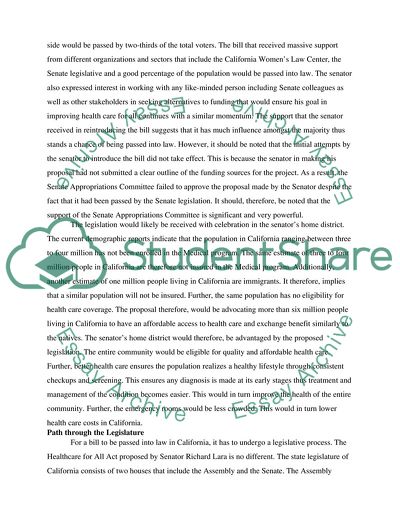Cite this document
(Legislative Plan by Senator Richard Lara Research Proposal Example | Topics and Well Written Essays - 1750 words, n.d.)
Legislative Plan by Senator Richard Lara Research Proposal Example | Topics and Well Written Essays - 1750 words. https://studentshare.org/politics/1864614-legislative-plan-sb-4-the-health-for-all-senator-richard-lara
Legislative Plan by Senator Richard Lara Research Proposal Example | Topics and Well Written Essays - 1750 words. https://studentshare.org/politics/1864614-legislative-plan-sb-4-the-health-for-all-senator-richard-lara
(Legislative Plan by Senator Richard Lara Research Proposal Example | Topics and Well Written Essays - 1750 Words)
Legislative Plan by Senator Richard Lara Research Proposal Example | Topics and Well Written Essays - 1750 Words. https://studentshare.org/politics/1864614-legislative-plan-sb-4-the-health-for-all-senator-richard-lara.
Legislative Plan by Senator Richard Lara Research Proposal Example | Topics and Well Written Essays - 1750 Words. https://studentshare.org/politics/1864614-legislative-plan-sb-4-the-health-for-all-senator-richard-lara.
“Legislative Plan by Senator Richard Lara Research Proposal Example | Topics and Well Written Essays - 1750 Words”. https://studentshare.org/politics/1864614-legislative-plan-sb-4-the-health-for-all-senator-richard-lara.


